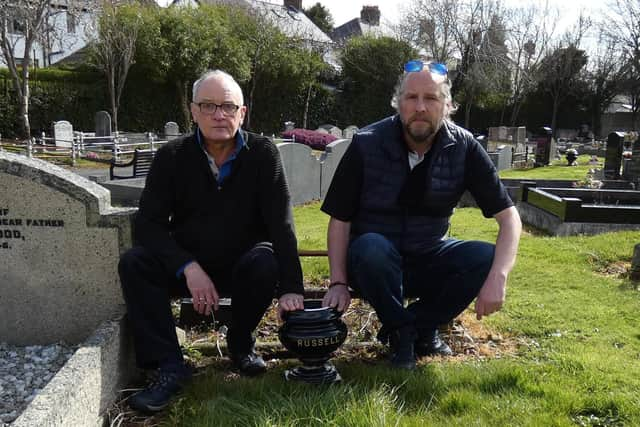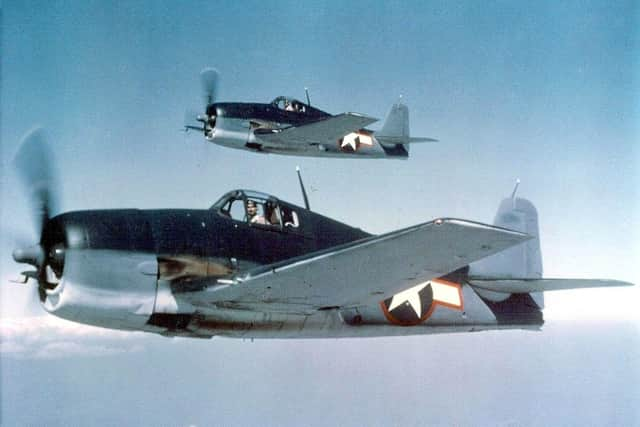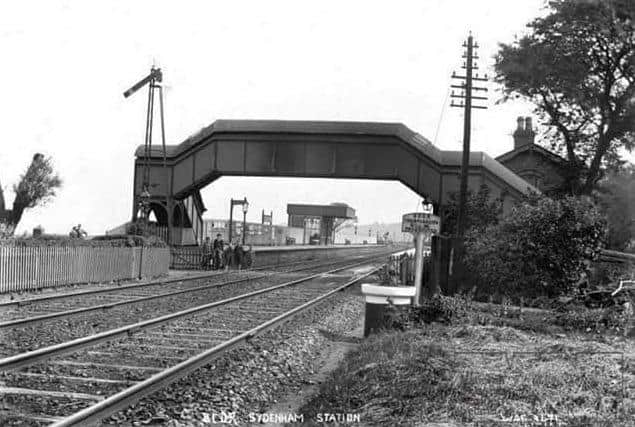War veteran’s child killed by crashing plane during WWII
and live on Freeview channel 276
He was Angus Norman Russell, a plumber, who was discharged from the Royal Irish Rifles in 1914 after being wounded in France.
Subsidised by a Military Disablement Pension, Angus and his wife Sadie and their family lived in Brandon Parade in Belfast’s Sydenham area. Just after 4pm on 10th April 1945 their 12-year-old son Norman went fishing for minnows (‘spricks’) at the Silver Stream, near the old Sydenham Railway Station.
Advertisement
Hide AdAdvertisement
Hide AdHe was accompanied by four chums from Brandon Parade. The other lads were Brian Johnston, Raymond Galloway, Leonard Waterworth, and Ronald Maitland.


On the same day, 26-year-old Sub-Lieutenant Edmund John Hoy, a South African pilot attached to 892 Squadron Fleet Air Arm, was scheduled to fly a newly delivered Grumman Hellcat aircraft from the Royal Naval Air Station at Sydenham to the squadron base at Eglinton, near Londonderry.
Shortly after take-off Hoy’s aircraft stalled. The plane crashed and caught fire, close to the five young anglers. The Fire Brigade and Airport staff frantically doused the burning plane with foam. At least one of the lads was hit by debris but there was no sign of Norman.
Another of the boys ran to Brandon Parade to alert Angus and Sadie. They were at the cinema where a notice about the incident was flashed on the screen. Soon family and friends were at the scene.
Advertisement
Hide AdAdvertisement
Hide AdAt first it seemed that Norman had probably been in another part of the field, away from the crash, until Ronald Maitland said he had definitely been hit and showed a policeman where little Norman had been fishing. An hour later the firemen found his body in the stream, under the wreckage of the plane. Sub-Lieutenant Hoy died of severe injuries later the same day at a Military Hospital base, nearby at Campbell College.


At the Coroner’s Enquiry, 12-year-old Raymond Galloway, who’d been struck by flying debris and knocked into the stream, said that one of the plane’s wings struck the ground causing it to somersault. He said Norman had been hit by the tail of the aircraft.
Norman was buried in Dundonald Cemetery on 13th April 1945. The funeral was conducted by the Reverend Chestnutt of Strand Presbyterian Church. Representatives of the Royal Navy and Fleet Air Arm attended the funeral, along with the 86th Company of the Boys’ Brigade and staff and children from Strand Public Elementary School. Sub-Lieutenant Hoy was buried in the Belfast City Cemetery (Glenalina Extension) the following day.
Norman Russell features in a book about Dundonald Cemetery published in 2019 by Peter McCabe, who lives not far from Brandon Parade. Peter says: “Norman Russell and his father lie in a grave that is only marked by a broken urn with the family name. There is no headstone and no other details until one examines Belfast City Council’s online burial records. I included Norman’s death and burial in my book because I wanted to highlight the personal and tragic story behind an essentially unmarked grave.”
Advertisement
Hide AdAdvertisement
Hide AdHistory Hub Ulster researcher Nigel Henderson has been documenting the burial locations of civilians who died in the Second World War. Nigel says: “Although a Civilian War Dead Roll of Honour was published after the Second World War, Norman’s name is not recorded. Whilst the majority of the civilians recorded on the Roll of Honour died due to direct enemy action in air raids and coastal bombardments, others died in accidents. For example, Josephine McGroarty died on 18th October 1943 when a Royal Air Force Avro Anson aircraft crashed onto a house at Drumavoley near Ballycastle.


"The inclusion of Josephine on the Civilian War Dead list, and the absence of Norman’s name, highlights the anomalies that can occur in ‘official’ records. In researching this tragedy for one of Peter’s graveyard tours, I was reminded of the wealth of information that can be gleaned from local newspapers.”
Nigel retrieved significant details about the tragedy from an 11th April 1945 edition of the now defunct Northern Whig newspaper. Peter McCabe has also published books about Belfast City Cemetery and Roselawn Cemetery. His books are available at the EastSide Visitor Centre in Belfast (visiteastside.com)
and History Hub Ulster is at historyhubulster.co.uk